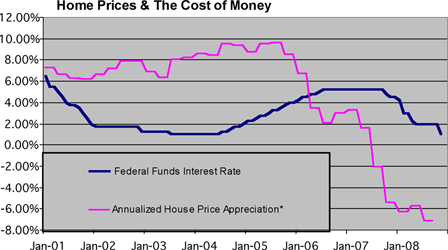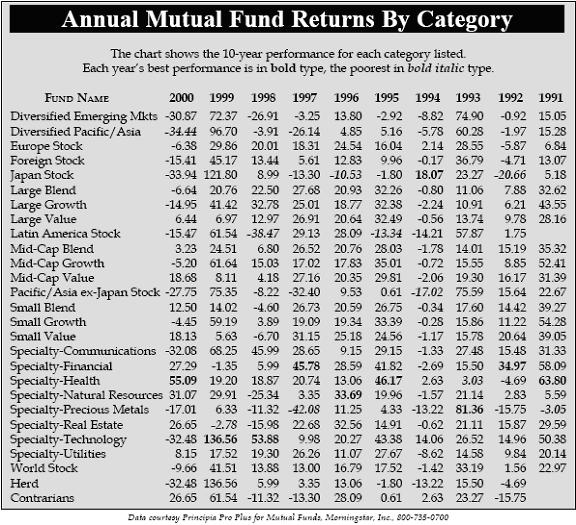Finally, after a year on the market, your house has sold. But you’d better bring your checkbook to the closing, because the money you’re getting from the buyer may not pay off your mortgage.
That scenario, so unlikely during the housing bubble, has become an unhappy reality for many homeowners looking to sell. Today, the inventory of homes is high, the credit market has tightened, the pool of potential buyers has shrunk and prices have slipped, leaving millions of people with negative equity in the family home. By the end of the year, says a report from Jan Hatzius, chief U.S. economist for Goldman Sachs Group, as many as 15 million households will be “upside down” on their mortgages, owing more on home loans than the underlying properties are worth. In some cases, beleaguered owners have simply handed their keys to the bank and walked away from the property, understanding that it will take years for their credit ratings to recover. Fortunately, there are options that create less drastic repercussions.
Negotiate terms: If you are having trouble paying the mortgage, try to persuade your lender to rewrite your loan on more favorable terms. Many banks have loss-mitigation departments that can help borrowers keep their properties, especially when restructuring a loan is likely to produce a better outcome for the lender than a lengthy and expensive foreclosure.
Rent it: If the home is not your primary residence, rent it until the real estate market recovers. The rental income may not fully cover your mortgage and expenses, but it might be enough to help you hang on until you can sell. An added benefit of renting is that any losses may be tax deductible, subject to certain limitations.
Consider a mortgage buy-down: If selling is inevitable, get creative to move your property. Consider a mortgage buy-down program, which essentially subsidizes the purchaser’s first few years of payments. Suppose, for example, that your home is listed at $269,000 and that you are considering dropping the price by $7,000. Instead of listing it for $262,000, apply the $7,000 difference to a mortgage buy-down program. For a buyer with a $225,000 30-year fixed-rate mortgage at 7 percent, you could reduce first-year payments to 5 percent and second-year payments to 6 percent. In many cases, that initial decrease in the monthly payments is more important to the buyer than the purchase price, so it can be a useful incentive.
Consider a lease-to-own: A lease-to-own contract combines a lease with an option for the renter to purchase the property at a set price within a specified period. The tenant pays an option fee, usually 1 percent to 5 percent of the price, which is credited toward the purchase price. The tenant then rents the property, paying an additional rent premium, which also is credited toward the purchase price. If the purchase option is not exercised, the tenant generally forfeits the option fee and rent premium. Lease-to-own options can be structured in a variety of ways, but done properly, they can benefit both parties, especially when a would-be buyer cannot yet afford to purchase the property or is having difficulty getting financing.
Arrange a short sale: Ask your lender to accept a sale for less than the full amount owed on the mortgage. Why would the bank agree to such a proposition? If the property is in arrears and nearing foreclosure, the bank may decide to cut its losses to avoid foreclosure and to get an underperforming loan off its books. To initiate a short sale, first negotiate a selling price with a potential buyer. Once the initial terms have been set, approach the loss-mitigation department of the lender, which will request a number of forms, evaluate the attractiveness of the offer, and ultimately choose to accept or reject the transaction. Proceed with caution, however, as you may still be on the hook for the difference between the mortgage balance and the property’s selling price if the lender asks a court to issue a deficiency judgment against you. Accordingly, when negotiating the short sale parameters with the bank, make sure the bank agrees to accept the sales proceeds as payment in full without any pursuit of a deficiency judgment. Historically, the amount of debt forgiven by the bank would be considered taxable income. However, the Mortgage Forgiveness Debt Relief Act of 2007 instituted a three-year provision allowing homeowners to exclude the forgiven debt from taxable income. This exclusion is not available for second homes or investment properties.
In February, the Department of the Treasury’s Office of Thrift Supervision released a plan that would encourage lenders to issue negative amortization certificates as an alternative to short sales or foreclosure. A negative amortization certificate gives the lender a claim against future proceeds in the event a house regains its value and is sold at a later date. Though numerous details are not yet settled, this may be an attractive option for both homeowners and lenders.
Other Market Considerations
Market trends may be working in your favor if you are looking to buy, but it still pays to do your homework. When looking at condo or co-op properties, for example, consider the health of the condo or co-op association. Developments in regions that saw significant speculative buying may be experiencing financial difficulties. Speculative buyers who are unable to make their mortgage payments are not very likely to pay maintenance dues or condo fees, either. Confirm whether the association has enough loss reserves to handle such defaults. Insufficient reserves could force the condo association to increase dues or cut back on building staff and maintenance in the future.
Market trends also affect homeowners who are not interested in either buying or selling. Recently, some lenders have cut off home equity lines of credit, even to borrowers with excellent credit ratings. Countrywide Financial Corp. has been the most notable to do so, suspending about 122,000 credit lines in late January. Declining home prices adversely impact loan-to-value ratios (the total debt outstanding versus the property value), which is a key determinant in how much debt a lender will grant. Loan-tovalue ratios have generally been in the neighborhood of 80 percent, but overzealous lenders granted loans well in excess of that during the recent housing boom. Lenders are taking preemptive action, suspending home equity lines of credit before borrowers can access them. If you plan to tap your home equity credit line, you may want to draw the funds right away to guard against a potential cutoff.
Depressed property values also can provide opportunities to transfer wealth to your heirs. Consider selling or making gifts of property to your heirs or to trusts for their benefit. If you want to continue living in the residence but still take advantage of low property values for gift tax purposes, consider a Qualified Personal Residence Trust (QPRT). Under a QPRT, the property is transferred to a trust for the ultimate benefit of your heirs. The trust specifies a term during which you can continue to control and live in the residence, after which the property passes to the beneficiaries of the trust. The contribution of the property to the trust is considered a gift to the trust beneficiaries. However, the value of the gift is significantly discounted because it is based on the value of the future right to own the residence at the end of the specified term. There are some drawbacks, though. If you outlive the term of the QPRT and wish to continue living in the residence, you may have to rent the property from your heirs. In addition, if you do not survive the term of the QPRT, the residence remains in your estate, as though the QPRT had never been created.
Whether you are a seller, a buyer or an owner just trying to weather this turbulent storm, it’s imperative that you understand the repercussions of recent market trends and the various tools you have at your disposal. As the recent real estate market has proven, even experienced, knowledgeable professionals can make some serious missteps.








